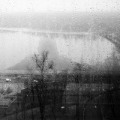Recommendation on negative scanner
-
Recently Browsing 0 members
- No registered users viewing this page.
-
Similar Content
-
- 28 replies
- 1,619 views
-
- 25 replies
- 1,287 views
-
- 7 replies
- 420 views
-
- 9 replies
- 972 views
-
- 18 replies
- 1,516 views
-



Recommended Posts
Join the conversation
You can post now and register later. If you have an account, sign in now to post with your account.
Note: Your post will require moderator approval before it will be visible.